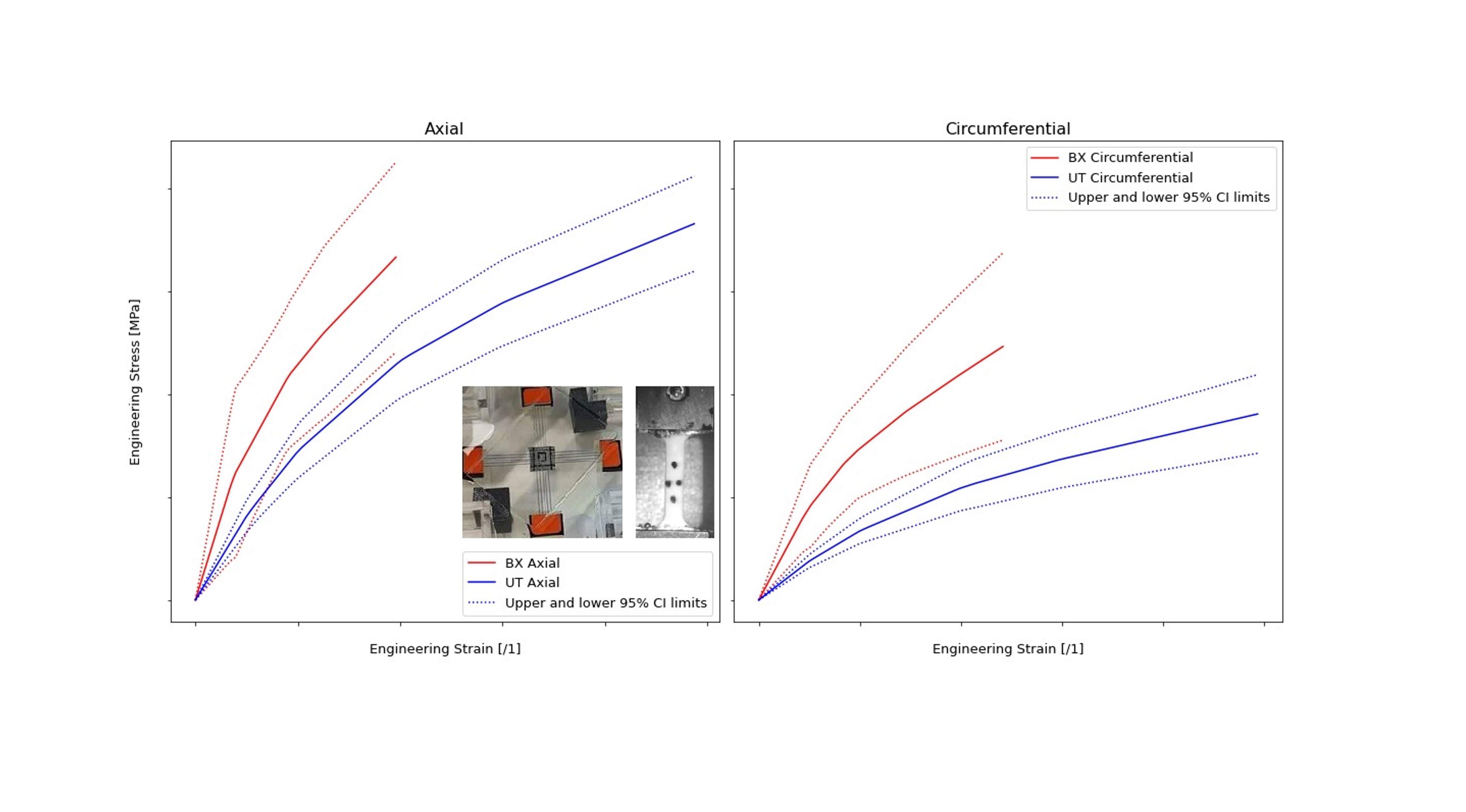Milestone on the scaffold characterisation and uncertainty quantification of materials for in-situ tissue-engineered heart valves
The MS2 milestone successfully concludes the scaffold characterisation work carried out in WP1
The lead researchers from each project partner unanimously agreed to validate the scaffold characterisation work completed in WP1 at the MS2 review board.
The research was conducted by characterising and evaluating the uncertainty (UQ) of three scaffold materials used in Xeltis for in-situ tissue-engineered heart valves.
As revealed by the various mechanical tests performed (uniaxial tension, biaxial tension, unconfined simple compression, stress relaxation, strain rate effect, plasticity test), the behaviour of the three scaffold materials that were characterised is determined by several interdependent nonlinear effects: hyperelasticity, the Mullins effect, the plastic set point, elastic anisotropy (Eaxial > Ecircum) and viscoelasticity (linear and isotropic). This characterisation also revealed an effect that the test method has on elasticity (equi-biaxial tension > uniaxial tension >> unconfined uniaxial compression).
With respect to the UQ evaluation, uncertainties were quantified based on their origin and were generally classified as aleatoric and epistemic. Epistemic uncertainty was quantified based on data obtained from four test laboratories (Leartiker / TU-Graz / KU-Leuven / ARMINES) on the uniaxial tension and biaxial tension of one scaffold material. With regard to epistemic uncertainty, this was quantified based on quality control data on three materials that was obtained from Xeltis.
When this work has been validated, the data will be used to model the material and carry out verification and validation activities, so that it can be applied to computational models of tissue-engineered heart valves. This work will be done during WP2 / WP3 / WP5.

